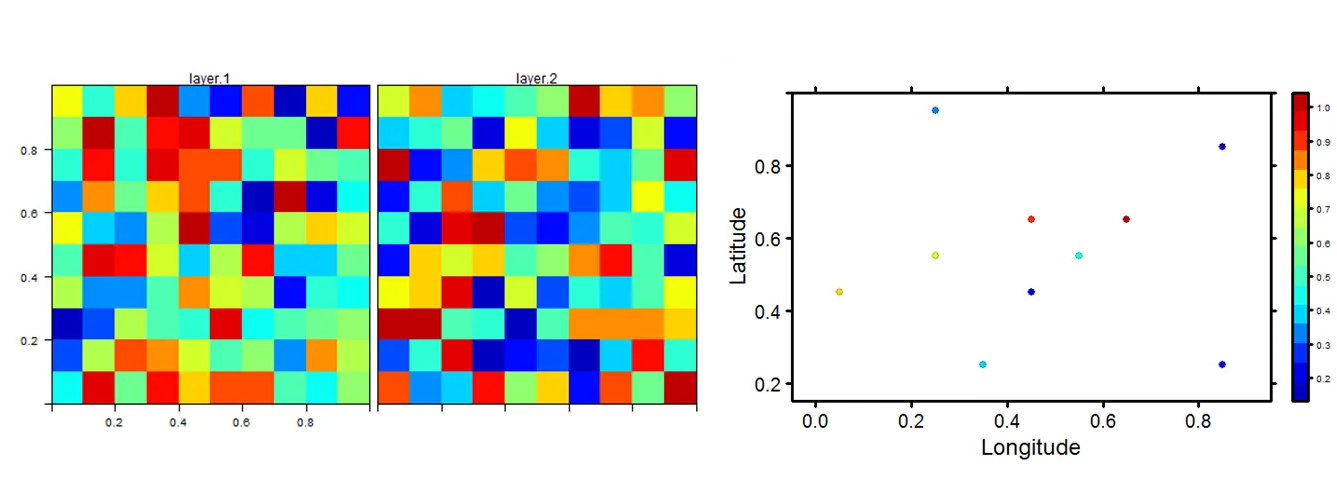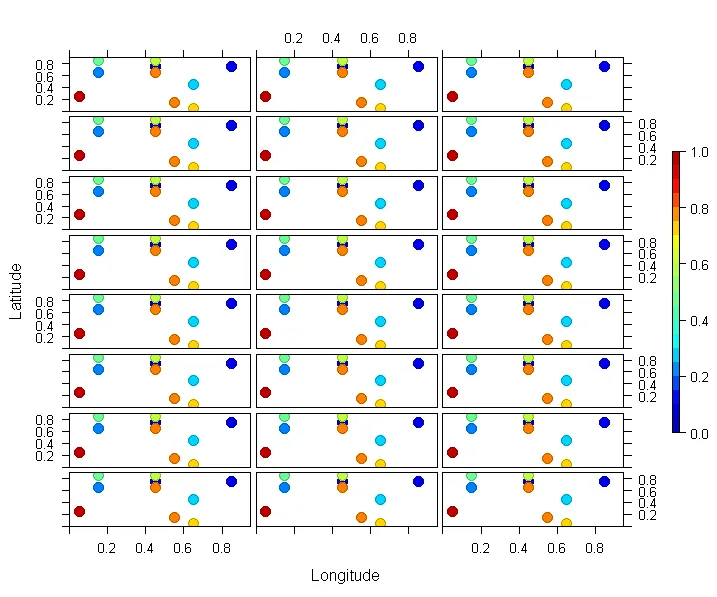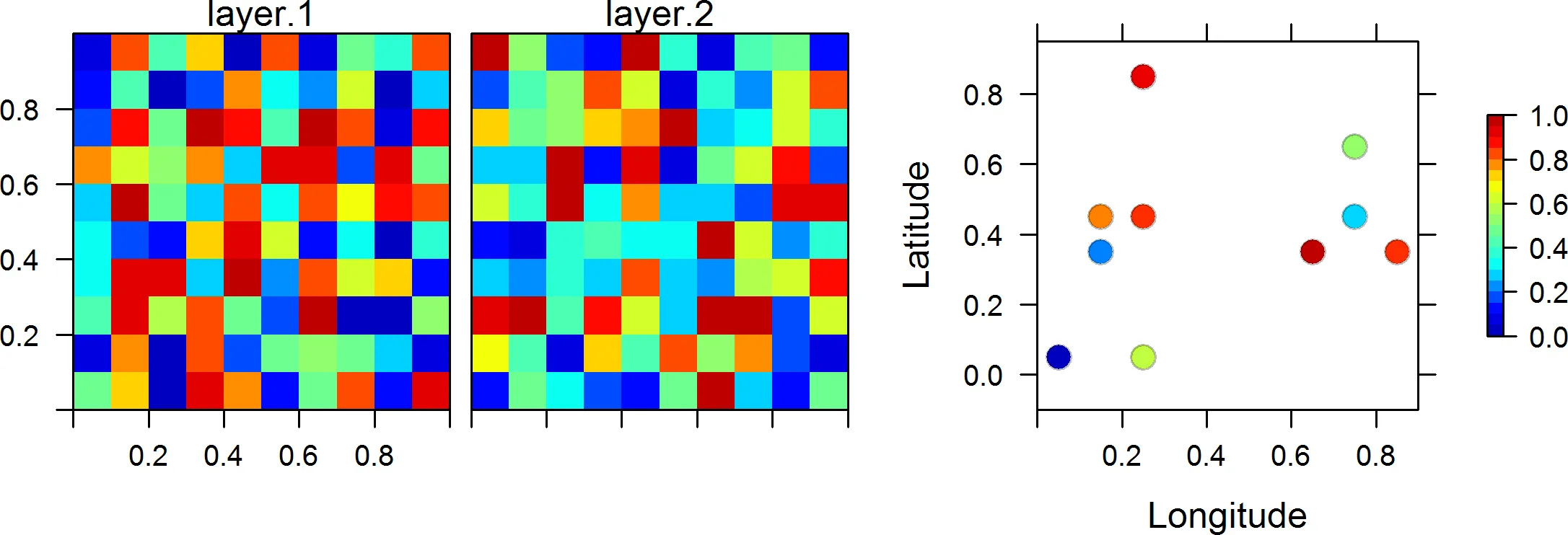使用下面的示例数据,我如何生成具有与下面手动连接图中相同颜色键的栅格和空间点图?
library(rasterVis)
library(raster)
library(colorRamps)
col=colorRampPalette(matlab.like2(255))
s <- stack(replicate(2, raster(matrix(runif(100), 10))))
xy <- data.frame(coordinates(sampleRandom(s, 10, sp=TRUE)),
z1=runif(10), z2=runif(10))
levelplot(s, margin=FALSE, at=seq(0, 1, 0.05),col.regions=col)
x=xy$x;y=xy$y;z=xy$z1
levelplot(z ~ x + y,contour=F, panel = panel.levelplot.points,
margin=FALSE,col.regions=col,
par.settings=list(axis.line=list(lwd=3), strip.border=list(lwd=3)),
cex=1.4, scales=list(x=list(cex=1.7),y=list(cex=1.7)),xlab=list(label="Longitude",cex=2),
ylab=list(label="Latitude",cex=2))
感谢@fdestch的帮助,我使用以下方法生成了上述示意图:
latticeCombineGrid(mget(rep("pp", 24)), layout = c(3, 8))
关于使用相同的色标打印多个图形的评论之后,接下来需要澄清的问题:
1) 如何确定面板的顺序?也就是说,像levelplot中使用index.cond一样决定放置特定绘图的行和列。



